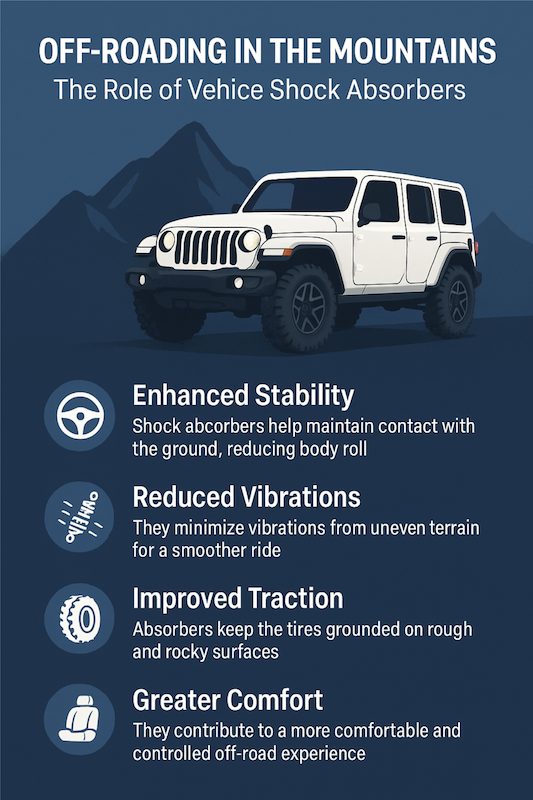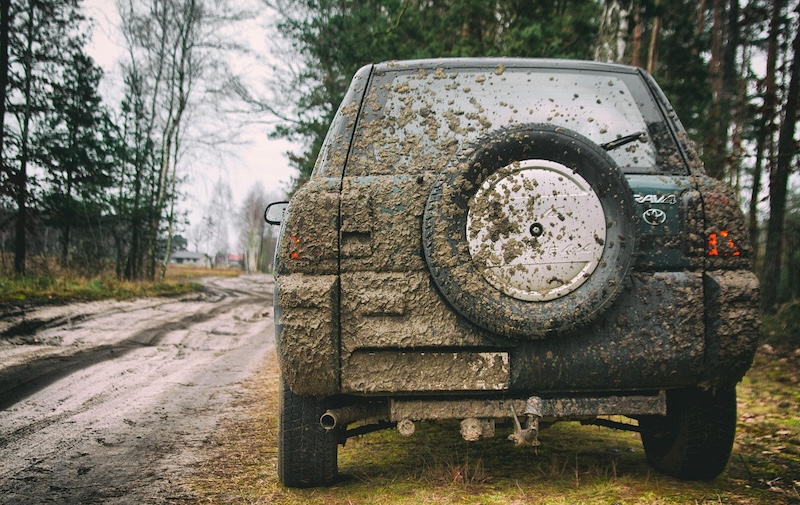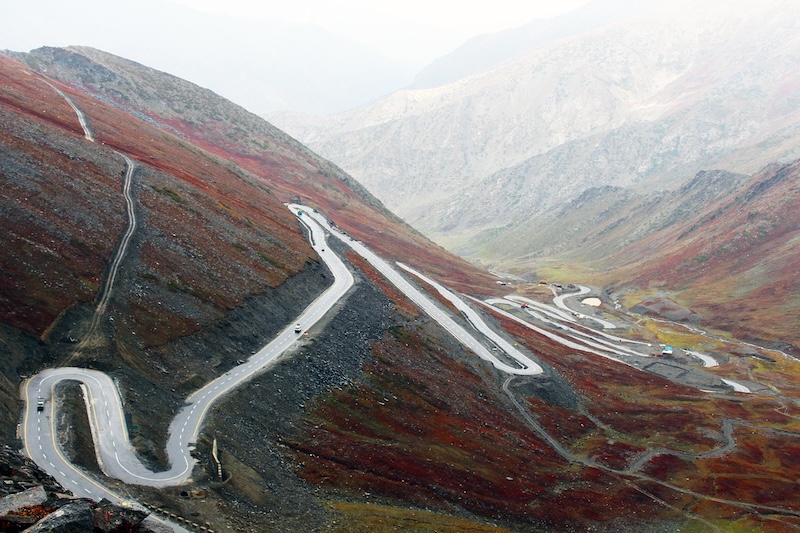Whether you’re driving on winding mountain roads or heading off-road on rocky trails, your vehicle’s suspension system plays a vital role in both safety and comfort. At the heart of this system, according to BUYCARPARTS, are shock absorbers. These components that are often underestimated until they’re put to the test.
Not only do these devices absorb the shock of uneven terrain, they also make a significant contribution to the car’s handling, especially on challenging surfaces. Without reliable shock absorbers, your journey over rough roads can quickly become dangerous or uncomfortable. In this article, we’ll look at how shock absorbers work, their effectiveness on mountain roads and off-road conditions, and how to choose the right shock absorbers for extreme driving situations.
Automotive experts from AUTODOC say: “If you’ve ever driven over a pothole or a gravel road, you know the importance of shock absorbers, also called dampers. They absorb the bumps and jolts of everyday road use, providing comfort and stability, improving handling, and optimising tyre traction.”

How do shock absorbers work?
Shock absorbers are hydraulic devices designed to control the movement of the vehicle’s suspension, preventing excessive bouncing or swaying. Every time a car hits a bump or dip in the road, the suspension springs compress and release. Without shock absorbers, this motion would continue uncontrollably, making the car difficult to handle.
Shock absorbers work by converting kinetic energy (movement) into thermal energy (heat) through hydraulic fluid inside the absorber cylinder. As the car’s suspension moves, this fluid is forced through small orifices in the piston, creating resistance and damping the motion.
There are several types of shock absorbers, including twin-tube, monotube, gas-filled, and coilover designs, each offering different levels of responsiveness and load capacity. According to gdstauto.com, choosing the correct type depends heavily on the terrain and vehicle use.
Shock absorbers on mountain roads
Driving in mountainous terrain involves constant changes in elevation, sharp turns and variable road surfaces – in other words, a perfect storm for suspension stress. In such scenarios, shock absorbers maintain tire contact with the road surface, which is crucial for steering accuracy and braking efficiency.
These components reduce body roll and maintain vehicle stability even during sudden direction changes, making the journey smoother and safer.

The Ups and Downs of Off-Road Driving
Off-road driving offers a unique blend of adventure and challenge, allowing drivers to explore remote landscapes and test their vehicle’s capabilities. However, the thrill of navigating difficult terrain comes with a set of potential pitfalls that require careful consideration and preparation.
The Allure of the Unpaved Path
The appeal of off-roading lies in the sense of freedom and exploration it provides. Proponents highlight the opportunity to connect with nature, reaching scenic spots inaccessible by conventional means. This adventurous activity can also be a form of “dirt therapy”, offering stress relief and a break from the everyday routine.
For many, off-roading is a social activity that fosters a sense of community among enthusiasts who share a passion for exploration and adventure. It also provides an opportunity to develop and hone driving skills, as navigating challenging terrain demands focus, precision, and quick thinking. Beyond the recreational aspects, off-road capable vehicles, often 4x4s, provide practical benefits such as enhanced traction in adverse conditions like snow and mud, and increased towing capacity.
Navigating the Potential Pitfalls
Despite its attractions, off-road driving is not without its challenges and risks. One of the most common issues is the potential for vehicle damage. Tires are particularly vulnerable to punctures and damage from sharp rocks and rough surfaces. The undercarriage is also at high risk of damage from rocks and debris, potentially affecting crucial components like the transmission and gas tank. The constant stress on the vehicle’s suspension can also lead to misalignment.
Getting stuck is another frequent problem, especially in mud, sand, or snow, and often requires specialized recovery gear and assistance. Beyond the mechanical challenges, there is also an environmental responsibility to consider. Irresponsible off-roading can damage delicate ecosystems, and drivers are encouraged to stay on designated trails and practice “Leave No Trace” principles.
Proper preparation is key to mitigating these risks. This includes thorough vehicle maintenance, packing essential recovery gear like tow straps and winches, and researching the trail conditions beforehand. Traveling with at least one other vehicle is also recommended for mutual assistance in case of trouble. By understanding and preparing for these potential downsides, off-road enthusiasts can more safely enjoy the many rewards of venturing off the beaten path.
Shock absorbers on Off-Road
Off-road conditions present a different challenge. Instead of high-speed corners, drivers face uneven surfaces, loose rocks, mud, and sudden drops. In such environments, the shock absorber’s job becomes even more vital. The suspension must compress and rebound frequently while maintaining vehicle balance.
Off-road vehicles benefit from heavy-duty shock absorbers that offer greater travel and heat dissipation. These units are typically gas-filled and sometimes equipped with external reservoirs to handle prolonged stress without fading. According to the additional information from gdstauto.com, high-performance off-road shocks are engineered to withstand extreme oscillations and prevent damage to other suspension parts.
How to choose shock absorbers for the most difficult routes?
When preparing your car for mountainous or off-road travel, choosing the right shock absorber is essential. Here are some key considerations:
- Vehicle Type: Different vehicles require different setups. A compact city car like the Mazda 2 won’t have the same suspension demands as a 4×4 SUV.
- Driving Conditions: For mountainous roads, focus on shocks with good rebound control and anti-roll features. For off-road, prioritize models with high travel length and heavy-duty construction.
- Shock Absorber Type: As noted on gdstauto.com, monotube shocks provide better cooling and are suitable for more aggressive driving. Twin-tube designs are more budget-friendly and sufficient for moderate terrain.
- Brand and Reviews: Always look for trusted brands.
Proper installation and periodic inspection are also important. Even the best shocks can degrade over time, especially when exposed to mud, gravel and salt, which can lead to leaks or corrosion.
In difficult terrain, whether it’s the twisting ascent of a mountain road or the unpredictable bumps of an off-road trail, shock absorbers are more than comfort enhancers; they are critical safety components. They ensure your tires remain grounded, your steering remains responsive, and your passengers remain in control, not airborne.


